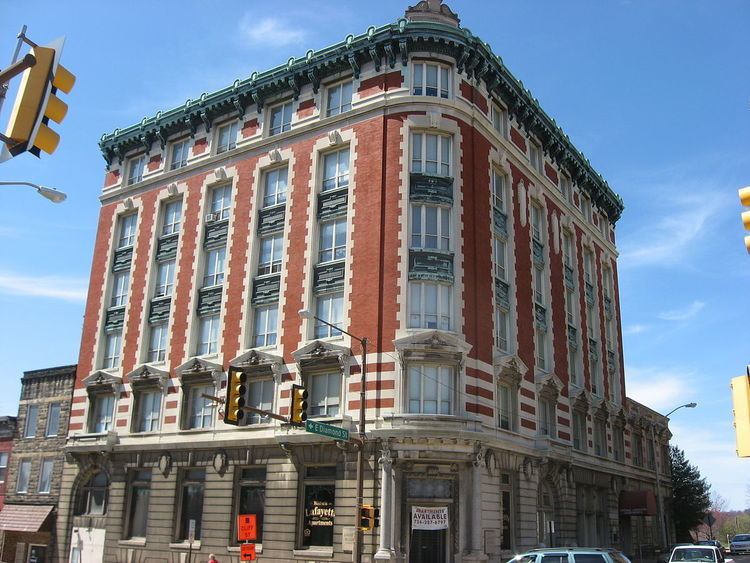Founded 1895 | ||
 | ||
Mowbray and Uffinger comprised an architectural partnership in New York City formed in 1895. Known for bank buildings and as vault engineers they designed over 400 banks in the pre-World War II era throughout the country. The principals were Louis Montayne Mowbray (1867-1921) and Justin Maximo Uffinger Sr. (1871-1948).
Louis Montayne Mowbray was born 1867 in New York. A September 27, 1883, article in The New York Times stated that he had been admitted to the US Naval Academy. Mowbray married Anna Scott. He died in New York in June 1921.
Justin Maximo Uffinger Sr. was born May 7, 1871, in New York City to German immigrants. He was born Justus Maximo Ueffinger but changed his name about the time of his marriage in 1905 to Marion I. Hoag. He began studies at the City College of New York at age 13 and completed his studies in engineering and architecture at Cooper Union in 1891. He articled for renowned architect Richard Morris Hunt while at Cooper Union and until 1895 when he formed a partnership with Mowbray. By 1910 the family was living in Summit, New Jersey. He had two sons, Justin M. Uffinger Jr. and Donald Hoag Uffinger.
After Mowbray’s death, the firm continued under its previous name until 1927, when it was reorganized as Uffinger, Foster, and Bookwalter. Justin Uffinger would retire in 1930 but continued to work as a consultant as late as 1940. He died in Summit, New Jersey on November 24, 1948.
Notable commissions
All are extant unless otherwise specified. In chronological order:
